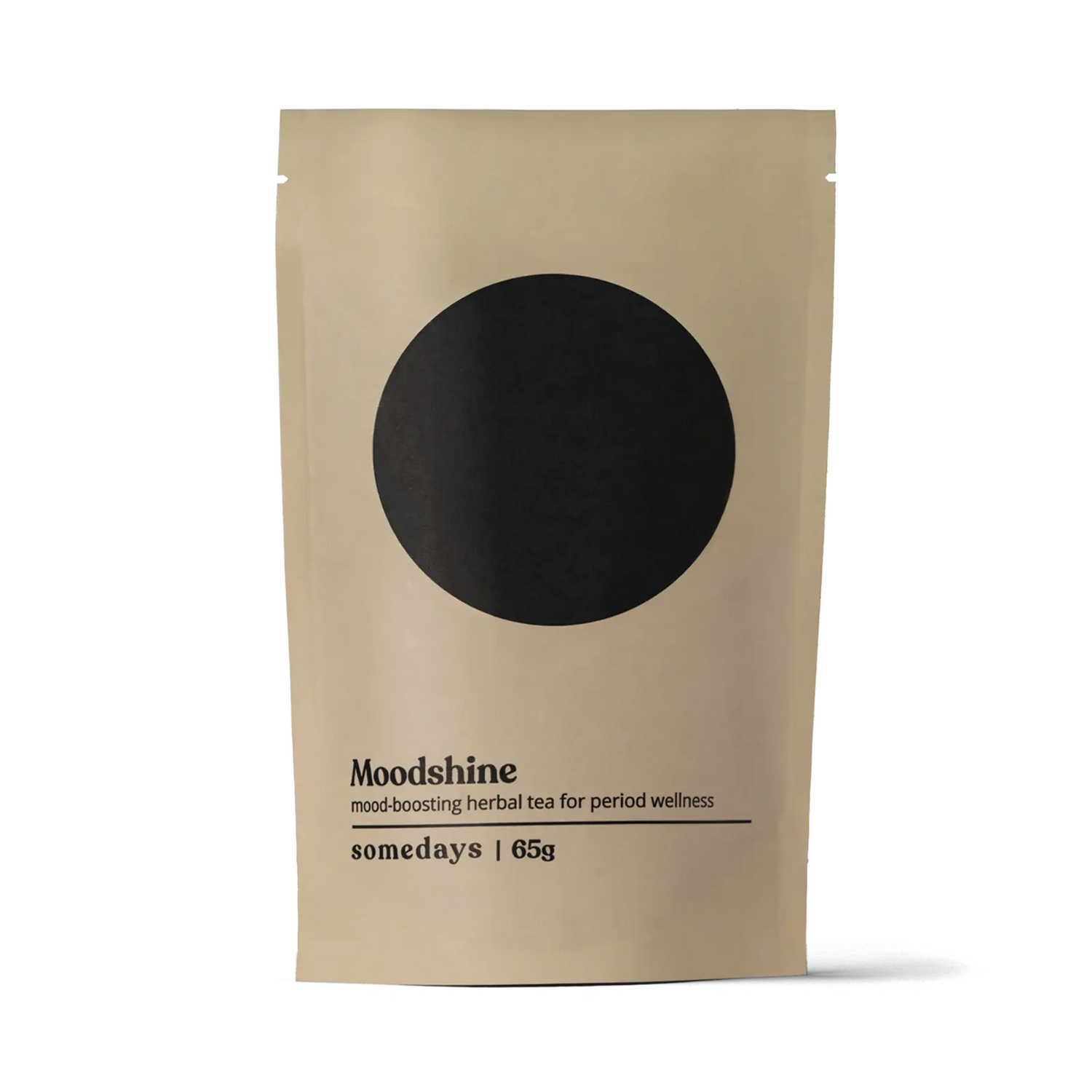Understanding Bowel Endometriosis: Symptoms, Diagnosis, Treatment, and Day-to-Day Management

Endometriosis strikes again with a plot twist; one-third of individuals who have endometriosis will experience endo in their bowels. For some, this may be a surprise, as many associate this chronic systemic inflammatory condition contained outside the uterus and ovaries. However, lesions, made up of endometrial tissue, have been found to grow on every part of the body. According to this 2018 review, after the genital organs, the bowel is the most common location for endometrial-like tissue to grow.
What is Bowel Endometriosis?
Most bowel endometriosis occurs in the lower part of the intestine just above the rectum and can be categorized into two main groups:
- Superficial (the endometriosis has affected the surface of the bowel)
- Deep (the endometriosis has passed through the bowel wall)
Endometriosis manifests and presents itself in diverse ways depending on many factors. Due to the complexity of the condition as well as the lack of endometriosis research, dealing with one's endometriosis can be a complex and unique journey. As with any of our blogs, we understand and encourage you to be your own advocate for what works and what doesn’t work for you and to prioritize practices that enhance your overall well-being and wellness.
What are the Symptoms of Bowel Endometriosis?
Like many other iterations of endometriosis, bowel endometriosis can present a variety of symptoms depending on the individual, which often overlaps with other gastrointestinal disorders. This makes diagnosis challenging and it is often misdiagnosed as irritable bowel syndrome (IBS). Some common symptoms of bowel endo include:
- Abdominal pain: Persistent or cyclical pain in the abdomen, especially during menstruation.
- Painful bowel movements: Dyschezia, or painful defecation, is common, particularly during menstruation.
- Altered bowel habits: This can include diarrhea, constipation, or alternating episodes of both.
- Rectal bleeding: In more severe cases, endometrial tissue can cause bleeding from the rectum, particularly during menstruation.
- Bloating and gas: Many women with bowel endometriosis experience bloating, gassiness, and feelings of fullness.
- Nausea and vomiting: Severe cases may involve nausea or vomiting, often linked to bowel obstruction, which is rare in cases of bowel endometriosis, but still possible.
- Pelvic pain: Chronic pelvic pain, particularly during menstrual periods, is a hallmark of endometriosis.
- Pain during sex
- Pain during menstruation
The severity of symptoms does not always correlate with the extent of the disease. Some individuals will not experience any symptoms of bowel endometriosis, which can also complicate the diagnosis, treatment and management processes.
What Causes Bowel Endometriosis?
There is no exact cause for endometriosis however, based on current research and information there are a few potential reasons:
- Early cell transformation: Cells left over from the embryo develop can develop into endo tissue.
- Transformed peritoneal cells: Hormones and immune factors may transform cells that line the inner side of the abdomen – peritoneal cells – into cells that are likely to line the inside of the uterus.
- Transplantation: Endometrial cells travel through the lymphatic system or blood to other organs
- Surgical scar complications: Endometrial cells may attach to scar tissue from an incision during surgery to the abdomen area, such as a C-section.
- Genetics
- Immune system condition: Problems with the body’s immune system response can make it unable to recognize and destroy abnormal endometrial tissue.
How Does One Get Diagnosed with Bowel Endometriosis?
Diagnosing bowel endometriosis can be difficult due to the overlap of symptoms with other gastrointestinal conditions such as irritable bowel syndrome (IBS) and inflammatory bowel disease (IBD). What is going to distinguish bowel endometriosis from other gastrointestinal conditions is the severity and frequency, as symptoms typically worsen around menstruation. If you feel that you may be suffering from bowel endometriosis, make sure to keep a record of symptoms and when they occur in relation to your cycle and communicate those records when you see a healthcare professional. The diagnostic process typically includes:
- Medical history and physical examination: A thorough medical history and pelvic examination are essential first steps. Doctors will often inquire about the nature of the pain, its timing in relation to the menstrual cycle, and any gastrointestinal symptoms.
- Imaging studies
- Transvaginal or transrectal ultrasound: These specialized ultrasounds can help detect endometriosis affecting the intestines.
- Magnetic Resonance Imaging (MRI): MRI is useful in visualizing deep infiltrating endometriosis, including bowel involvement.
- Barium enema: An x-ray exam that can detect changes or abnormalities in the large intestine. This involves an injection of a liquid containing barium that coats the lining of the colon, which allows the X-ray machine to produce a clear image and silhouette of the colon.
- Endoscopy: In some cases, a colonoscopy may be performed to rule out other causes of symptoms, though it often cannot detect endometriosis.
- Laparoscopy: The gold standard for diagnosing bowel endometriosis is laparoscopy, a minimally invasive surgical procedure that allows direct visualization and biopsy of endometrial tissue on the bowel.
What are the Treatment Options for Bowel Endometriosis?
As mentioned above, the treatment for bowel endometriosis is going to be specific to you and often depends on the severity of symptoms, the extent of the disease, the patient's desire for fertility as well as overall comfort, well-being and accessibility. Some of the main treatment options include:
- Surgery
- Conservative surgery: Laparoscopic surgery to remove endometriotic lesions on the bowel can alleviate symptoms while preserving bowel function.
- Bowel resection: In severe cases, where the bowel is extensively involved, partial bowel resection (removal of a section of the bowel) may be necessary. This is typically considered when medical treatment fails or if there is a risk of bowel obstruction.
- Combination therapy: A combination of surgery and post-operative hormonal therapy is often recommended to manage symptoms and reduce the risk of recurrence.
- Medication:
- Hormonal therapy: This is the cornerstone of medical treatment. Options include oral contraceptives, gonadotropin-releasing hormone (GnRH) agonists, and progestins. These medications aim to reduce estrogen levels, thereby suppressing endometrial growth.
- Pain relief: Nonsteroidal anti-inflammatory drugs (NSAIDs) are commonly used to manage pain.
- Laxatives and antidiarrheal agents: These can help manage bowel symptoms like constipation or diarrhea.
How Do You Manage Bowel Endometriosis Day To Day?
Depending on the individual, living with bowel endometriosis can be challenging and act as a barrier to daily joys and tasks. However, regular routines and small yet consistent changes to lifestyle can be effective ways to bring a sense of control and comfort to otherwise pain-dominated experiences. Here are some key approaches:
- Flare-Up Routines and Rituals: When experiencing a flare-up of bowel endometriosis, it can be helpful to have a go-to ritual with products and practices that can help you move through discomfort mindfully and sustainably. This could look like diaphragmatic breathing, affirmations, or a soothing essential oil.
- Dietary management: Many individuals find relief by following a low FODMAP diet, which reduces the intake of certain carbohydrates that can trigger bloating and gas. Keeping a food diary to identify and avoid personal trigger foods can also be helpful.
- Pain management: In addition to prescribed pain medication, alternative therapies such as acupuncture, yoga, and mindfulness meditation can help manage chronic pain. Some great alternative pain relief products are Somedays Better Cycle Kit and Somedays Cramp Cream.
- Flare-Up Routines and Rituals: When experiencing a flare-up of bowel endometriosis, it can be helpful to have a go-to ritual with products and practices that can help you move through discomfort mindfully and sustainably. This could look like diaphragmatic breathing, affirmations, or a soothing essential oil.
- Regular exercise: Gentle exercises like walking, swimming, or yoga can help reduce stress and improve overall well-being. However, it's essential to listen to your body and avoid activities that exacerbate symptoms.
- Support networks: Joining a support group, either in person or online, can provide emotional support and practical advice from others who understand the challenges of living with bowel endometriosis.
- Stress management: Chronic pain and digestive issues can be stressful, so incorporating stress-reduction techniques, such as deep breathing exercises, meditation, or counseling, can be beneficial.
- Regular medical follow-ups: Regular check-ups with a gynecologist and gastroenterologist are essential to monitor the condition and adjust treatment as needed.
Bowel endometriosis is a complex and often debilitating condition that requires a multifaceted approach to diagnosis, treatment, and management that centers on your comfort and health. While there is no cure for endometriosis, a combination of medical, surgical, and lifestyle interventions can help manage symptoms and improve quality of life. Individuals living with this condition should work closely with a healthcare team to find a personalized treatment plan that addresses both their physical and emotional well-being.
Much love.
Ella Adkins is a writer, teacher and occupier on the ancestral homelands of the Sḵwx̱wú7mesh, Stó:lō and Səl̓ílwətaʔ/Selilwitulh and xʷməθkʷəy̓əm Nations. Her work has been featured in Femme Art Review, Peripheral Review, SAD Mag, ReIssue and Public Parking.
Think you may have endometriosis but haven’t been diagnosed? Take our free endometriosis assessment available HERE.
Join our Betterdays community - a weekly newsletter where we break down the latest (TLDR) news, research and breakthroughs related to your reproductive health—with a splash of humor to get you through the tough days.
Previous Article All Articles Next Article
All Articles


